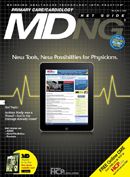Publication
Article
MDNG Primary Care
Covering Your Assets: How to Make Money in the Litigation Game
Author(s):
The biggest obstacle to filing a lawsuit has always been money. Lawsuits cost a lot and most people just can’t afford it. When legal fees are added to the costs of consultants and expert witnesses all but the wealthiest few would be hard pressed to cover the ongoing expenses of even the most routine business dispute or injury case.
Medical malpractice cases, in particular, are often among the most expensive for a plaintiff. Usually one or more medical experts are required for the initial evaluation of liability and then for ongoing advice and testimony in depositions and possibly a trial. At expert rates of $500-$1,000 per hour and up, it is difficult for any plaintiff to mount a credible case without access to significant resources to finance these costs.
As we’ve discussed in previous articles, a partial solution to this affordability issue is the contingent fee agreement that shifts the up-front cost of the litigation from the plaintiff to the lawyer in exchange for a percentage of the recovery. This arrangement often works well for both sides. Many individuals who otherwise cannot afford to hire lawyers are able to achieve some measure of compensation for legitimate injuries.
The contingent fee business model works especially well for attorneys. Because of the inherent advantage of the plaintiff in litigation, the potential profits are limited only by the number of cases, good or bad, that can be effectively financed. Think of the plaintiffs lawyers as the house in a casino game. They have a built-in advantage and like the casino house, all they need to make lots of money is cash for financing and a steady supply of customers.
What happens when attorneys don’t have enough money to cover existing cases or to take on new ones? Within the past few years, lawyers and other profitable business owners have had their bank credit lines tightened or closed, severely restricting funds available to finance an inventory of cases. Without easy access to cash, lawyers have been forced to reduce their case load, limiting the number of cases they can take and leaving lots of potentially profitable cases on the table.
Although the litigation business was once the exclusive province of the lawyers, the potential for large profits is attracting a flock of outside entrepreneurs who have an appetite for risk, surplus cash, and a willingness to supply ample funds in exchange for outsized returns. Historically low interest rates are encouraging individual investors, investment companies, hedge funds and even some specialty banks to enter the business of financing malpractice cases, personal injury claims, business litigation, and even divorce cases. In exchange for supplying the attorney with the funds to fully litigate a case, these investors take a big share of the ultimate settlement or award.
For example, one company, Lawsuit Financial Corp., claims on its website that it is often able to supply funding for a case within an hour of receiving the case material. In addition to providing the cash for the litigation, the company also offers to provide advances to the injured client to relieve financial pressure and enhance “staying power” and settlement leverage. The company invites investor participation in funding specific cases with the prospect of generous returns.
Investors can also participate in cases where contingent fee financing is not practical or permitted. For example, The Model Rules of Professional Conduct 1.5(d) expressly prohibit contingency fees in domestic relations cases where the fee is contingent on the securing of a divorce or obtaining a property settlement. The stated policy behind this rule is that the role of a lawyer in domestic matters should be to encourage reconciliation. As legal commentator Christine Hurt points out (http://hcp.lv/fIh1yv), if your lawyer only gets paid from a property settlement and the amount of the fee is based on a percentage of the total settlement, the goals of reconciliation and family preservation are even less likely than they are now.
Litigation has always been a profitable business for lawyers. But now outside investors are taking advantage of burgeoning opportunities for profits in the litigation business. While this is certainly great news for the plaintiff class, physicians and other potential “deep pocket” defendants may be facing a newly armed and cash-rich adversary in the courtroom.
Robert J. Mintz, JD, is an attorney and the author of the 2011 new and revised edition of the book Asset Protection for Physicians and High-Risk Business Owners. To receive a complimentary copy, call 800-223-4291 or visit www.rjmintz.com.






